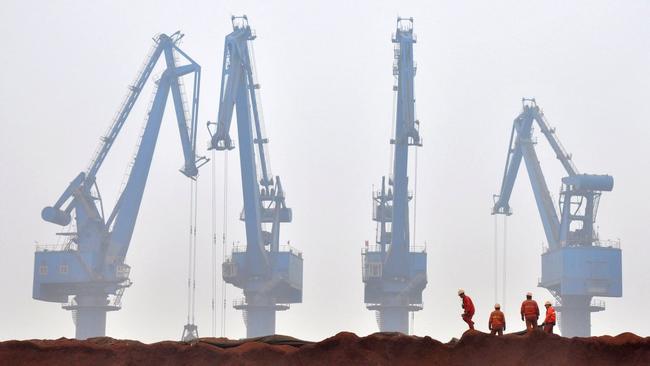Vale disaster helps send iron ore prices to highest level since 2014
Iron ore prices have leapt to levels not seen since 2014 as Vale deals with turmoil in the wake of its dam disaster.

Iron ore futures prices leapt overnight, as fresh turmoil for Brazilian miner Vale SA pushed the crucial metal to heights not seen since August 2014.
Benchmark iron ore with 62 per cent iron content rose 3.8 per cent to $US92.32 a metric ton. Iron ore is the key ingredient in steel that goes into building materials, ships and cars.
The price surge came as The Wall Street Journal reported that one of the safety auditors who inspected a Vale mining tailings dam that collapsed in January told police he felt pressured to attest to the safety of the structure despite indications it was unsafe.
State authorities on Tuesday suspended Vale’s operating license for the tailings dam at one of its biggest mines. Known as Brucutu, it produces 30 million tons a year, or about 9 per cent of the company’s annual production.
The Brucutu suspension surprised some market watchers and highlights the increased scrutiny Vale and other miners are likely to face in the aftermath of the dam collapse.
“There’s uncertainty in terms of regulation from here. Vale have been sending messages saying it wasn’t necessary to close that particular mine,” said Vivienne Lloyd, senior analyst at Macquarie. But “the move by regulators has obviously up-ended that messaging and demonstrated the power in the company’s hands.”
Since the dam disaster, BHP shares have risen more than 7 per cent, from $32.98 on January 25 to be trading at $35.44 apiece at 2.30pm (AEDT) on Friday.
Rio shares have lifted more than 12 per cent, from $80.25 on January 25 to be trading at $90.07 apiece on Friday.
Fortescue shares rallied more than 25 per cent over the period, from about $4.80 a share before the disaster, to $6.03 at about 2.30pm (AEDT) on Friday.
Vale is the world’s largest iron-ore producer. Its share price has fallen by more than one-quarter since one of its tailings dams in the rural town of Brumadinho in southeast Brazil burst on Jan. 25, killing at least 150 people. About 200 more people are missing and feared dead.
While trading volumes have been thinner than usual this week, with several Asian markets celebrating the Lunar New Year holiday, iron ore’s move higher also points to an increase in broader seasonal demand, according to Carsten Menke, commodity analyst at Julius Baer.
“This couldn’t have come at a worse time, when the Chinese steel industry is restocking for when consumption picks up after the holiday,” Mr. Menke said.
The election last year of Brazilian President Jair Bolsonaro — who ran on an antiregulation platform — adds a political element for mining investors, Mr Menke said. “The market is asking which mining company is next. There is increasing pressure showing this kind of behaviour is not being tolerated,” he said.
The seasonal rise in demand, and the threat of higher regulatory costs, mean a move above $US100 a ton is “certainly a possibility,” according to Macquarie.
Still, some market watchers played down the significance of the hit to global supply from Vale’s mine suspension.
“Fundamentally, it’s 70 million tons out of a 1.6-billion-ton seaborne market,” said Kash Kamal, associate at BMO Capital Markets.
“I would argue there’s shaky justification for this move higher. People may sell the fact when the dust settles.”
Dow Jones Newswires

